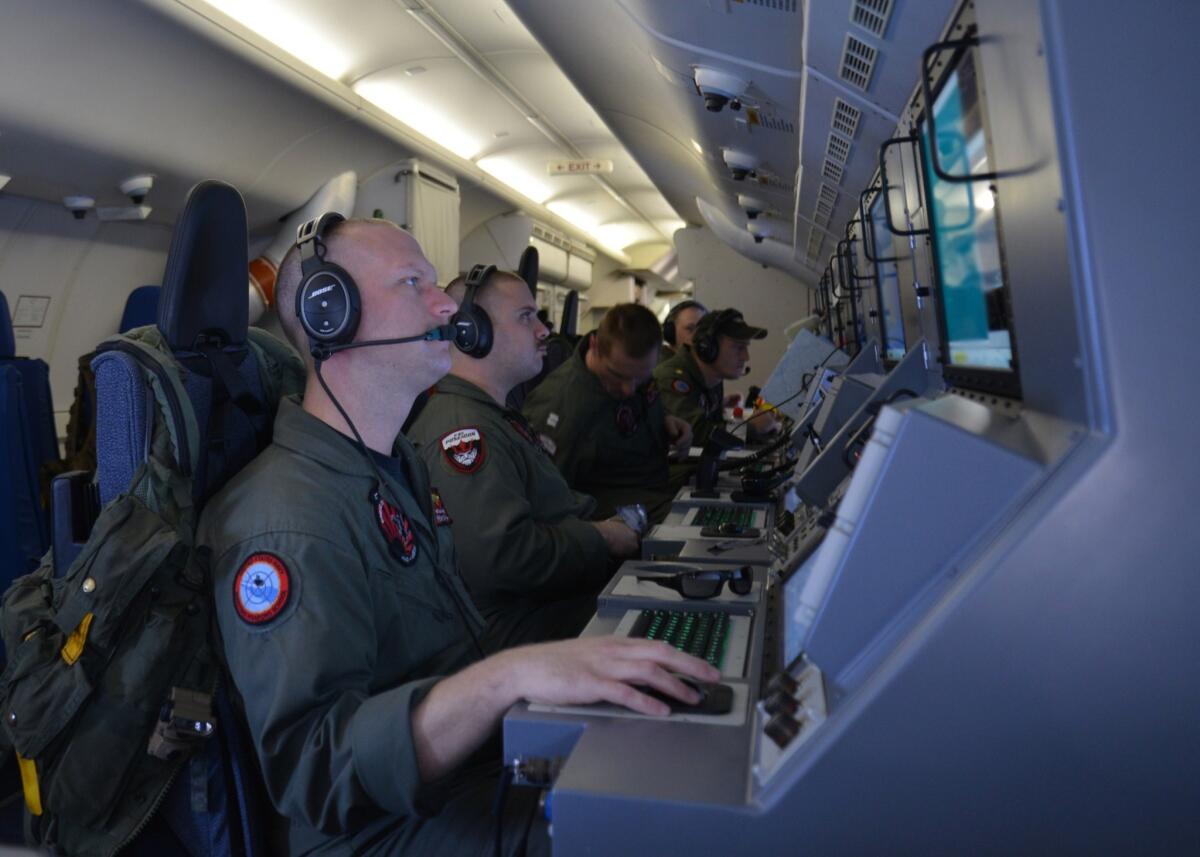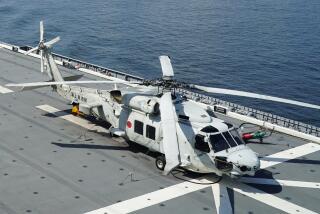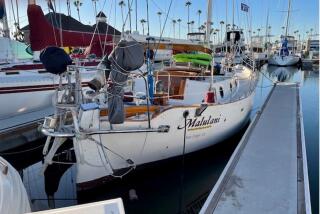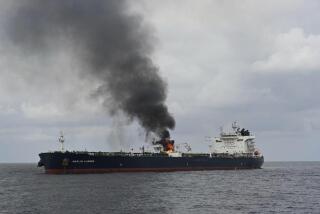U.S. Navy pulls out ship, opts for planes in Malaysia flight search

The Navy pulled out the guided-missile destroyer Kidd, with its two search and rescue helicopters, opting to rely on a pair of submarine-hunting aircraft from nearby land bases to scour the Indian Ocean for missing Malaysia Airlines Flight 370.
The San Diego-based destroyer with a crew of 314 and its MH-60 Seahawk helicopters have searched a combined 15,000 square miles since March 8, when the Boeing 777 mysteriously vanished.
No debris or wreckage related to the aircraft or the 239 missing passengers and crew has been found. The Navy said the move was made after consulting the Malaysian government.
“I’m proud of our crew and their performance and resiliency during this challenging mission,” the Kidd’s commanding officer, Cmdr. Gabe Varela, said in a statement. “We trained for operations like this throughout the year and when it was time to execute this crew came though flawlessly.”
As the search area begins to expand into the daunting vastness of the southern Indian Ocean, the Navy will continue deploying its P-8 Poseidon and P-3 Orion submarine-hunting aircraft.
Officials say the planes can search larger areas with their advanced surface search radars and sensors, covering up to 15,000 square miles in one nine-hour flight.
The P-8 Poseidon, the Navy’s newest submarine-hunting aircraft, arrived Saturday to search for the missing airliner.
Based on a heavily modified Boeing 737, the Poseidon typically flies at elevations of 5,000-10,000 feet, and can stay aloft for about nine hours. The plane is outfitted with advanced radar, and electronic signal sensors to identify, find and track surface targets.
It also can drop sonar systems that send back signals indicating what is below the surface. The Navy has called the P-8 “the most advanced long range anti-submarine and anti-surface warfare aircraft in the world.”
Earlier this year, though, the chief of the Pentagon’s weapon testing office wrote in his annual report that the plane is “not effective for the intelligence, surveillance and reconnaissance mission.”
The first operational squadron deployed in Japan in December. The Navy plans on spending $33.6 billion for 122 of the planes, according to the Government Accountability Office.
The Lockheed P-3 Orion is a four-engine turboprop patrol aircraft that’s been flying with the Navy since 1962, and was used in the blockade during the 1962 Cuban Missile Crisis.
Based on Lockheed’s Model 188 Electra commercial airliner, the Orions were made in Burbank and later Palmdale.
The Navy said the P-3 will remain in Kuala Lumpur, Malaysia, for now. The P-8 will move to western Australia to aid efforts in the south.
The Kidd will travel through the Strait of Malacca to the South China Sea.
More to Read
Start your day right
Sign up for Essential California for news, features and recommendations from the L.A. Times and beyond in your inbox six days a week.
You may occasionally receive promotional content from the Los Angeles Times.







